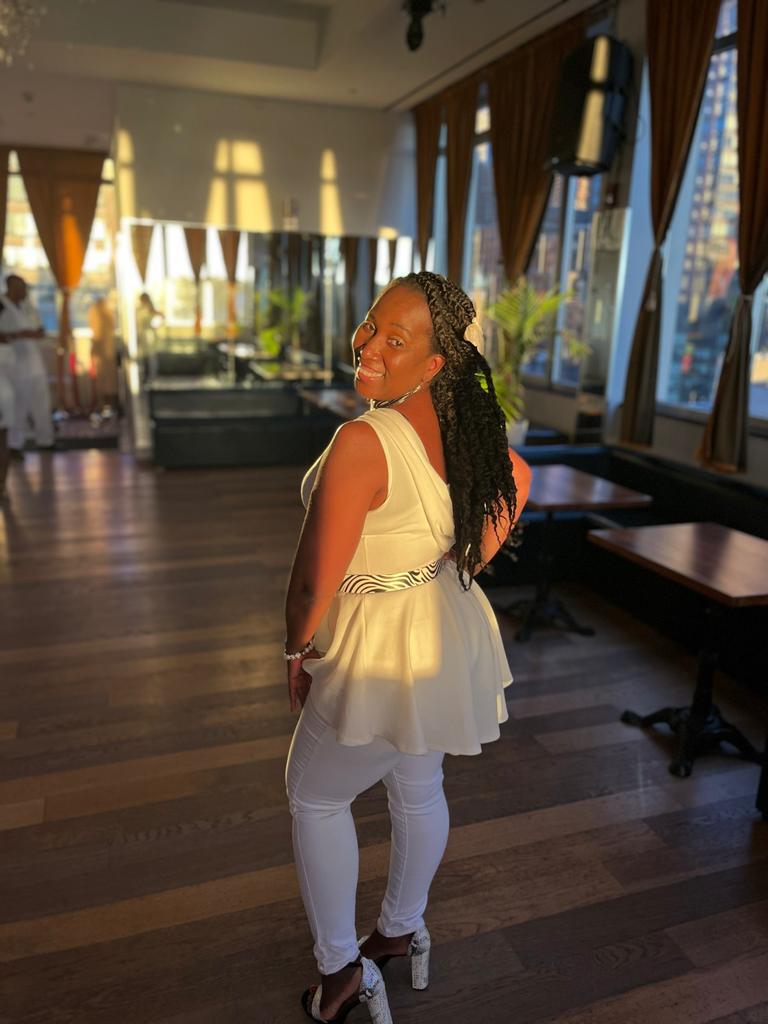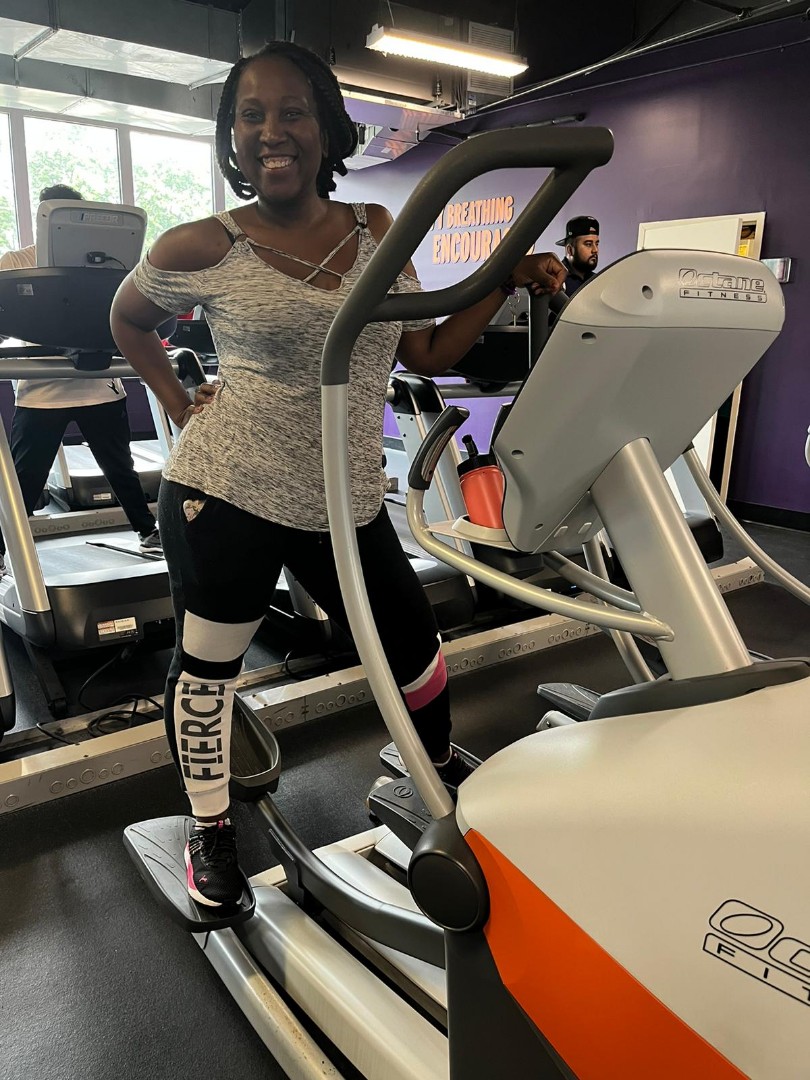
During their cycles, many women experience heavy bleeding, bloating, cramps, migraines, etc. Many of these symptoms are a normal part of going through your period. However, what many women don’t know is that, in some cases, they can also be a sign of something far more serious.
Grace, a fibroids patient, knows that feeling all too well. Although she was officially diagnosed with fibroids in 2012, she’s been living in pain since high school.
“Every time I had my cycle in high school I would end up in the nurse’s office because I was in so much pain…No one told me I had fibroids. I was just told that it was normal, this is what every girl goes through, and so I thought that pain was normal. Every month I would go through that excruciating pain and I thought it was normal,” Grace shares.
The thought that painful periods that consist of heavy bleeding are normal is something that many women fall victim to, including the women in Grace’s family.
“I have two other sisters and they both were diagnosed with fibroids later on in life, but when we were in high school we didn’t know what it was. We just thought it was normal. Even when I spoke to my mom, she had bad cramps as well. So she grew up with it and she wasn’t officially diagnosed,” Grace adds. “Back in those days, they didn’t really go to the hospital for that so my mother didn’t really officially get diagnosed. But after my diagnosis, I concluded that my mother did have fibroids as well.”
RELATED: Loom Founder Has 23 Fibroids Removed: “I Was Really Shocked”
By the time Grace finally got a diagnosis, she was in college. She had spent years being poorly examined by several doctors with no answers or options for treatment besides ibuprofen.
“I was getting sick every month. I would have to be missing class. I would be in so much pain and I was just like this is not normal I need to see a doctor,” Grace recalls.
After undergoing an ultrasound and other testing, Grace finally had the answers she had been searching for. However, she wasn’t exactly sure what fibroids were.
“I didn’t know what fibroids were. None of my friends were talking about it. I didn’t know anybody talking about fibroids. It’s like it wasn’t something you talked about. It wasn’t in the news, so I didn’t really know what it was. I was initially shocked because I was like what is this disease? Is it contagious? Is it gonna kill me?,” the spokesperson for the White Dress Project, a non-profit organization aimed at promoting education around uterine fibroids, shares.
Like many of the 80 percent of Black women living with fibroids, the only treatment option Grace received was a hysterectomy. Grace, who’d never had surgery, wasn’t ready for that option so she decided to wait it out to see if the fibroids grew.
“I was like OK what can I do in the meantime,” Grace says.
She opted to take birth control to manage her symptoms. “Once I got on the pill, my pain was still there but it was slightly reduced. And then every time my period came, I would start taking medication a few days prior – like my ibuprofen. It also regulated my cycle so every time I knew when to expect it, so it lightened up,” Grace notes.

The pain was reduced just slightly enough to allow Grace to go to school normally.
Eventually, Grace sought the advice of another doctor. She was given two options: a hysterectomy (a surgical operation to remove all or part of the uterus) or a myomectomy (an operation to remove fibroids while preserving the uterus).
Although a hysterectomy would have eliminated Grace’s problem altogether, she wanted to have children, so she opted to continue with natural alternatives, such as dieting and exercising throughout her schooling.
Exercising helped her combat the lack of energy she had due to low iron, however, she noticed that her stomach was growing larger.
“My doctor told me my uterus had stretched to the size of a six-month pregnancy and the size was like 21 centimeters,” Grace shares. “My clothes didn’t fit right. I was constantly shopping for new clothes because I just felt like oh this doesn’t look good on me.”
She ultimately decided to go through with a myomectomy, which allowed her to preserve her uterus and still be able to conceive. After the surgery, her uterus went back to the normal size of six centimeters.
She did experience some relief, but it was short-lived. Grace’s fibroids returned. She hasn’t decided on her next method of treatment, but as she weighs her options, she is looking at non-invasive options instead of going under the knife again. One option she is considering is uterine fibroid embolization (UFE), which wasn’t an option for her before due to the size of her fibroids. UFE is a minimally invasive procedure used to block blood flow to fibroid tumors, causing them to shrink.
Grace’s advice to women living with fibroids
- Find the right doctor. “Find a good doctor that you feel listens to you, understands you, and you connect with, and try to get those symptoms treated as soon as you can.”
- Find a therapist. “Finding a therapist to help you through what you go through –that’s really important– because having fibroids really affects you mentally…and it adds a lot of stress to your life.”
- Find a community. “Finding a community is very important. I would tell women to find other communities out there that can provide resources.”
Grace recommends The Uterine Health Guide, a digital repository created by Sumitomo Pharma America (formerly Myovant Sciences) and Pfizer that contains information about menstrual health, including conditions such as uterine fibroids. The Uterine Health Guide also offers advice for talking to your doctor and finding support in your community.
RELATED: Day 1: Just Been Diagnosed with Fibroids
When to talk to a doctor about fibroids
Grace notes that “your body usually tells you when something is off.”
If you are experiencing any of the following, it’s a good idea to schedule an appointment with your doctor to get tested for fibroids:
- Heavy bleeding (which can be heavy enough to cause anemia) or painful periods
- Feeling of fullness in the pelvic area (lower stomach area)
- Enlargement of the lower abdomen
- Frequent urination
- Pain during sex
- Lower back pain
- Complications during pregnancy and labor, including a six times greater risk of cesarean section
- Reproductive problems, such as infertility, which is very rare
The good news is that there are several treatment options available for fibroids, including:
- Medications. Used to help treat some of the symptoms associated with uterine fibroids.
- Gonadotropin-releasing hormone (GnRH) antagonists. Decrease heavy periods associated with fibroids.
- Minimally invasive procedures. Destroy the fibroids.
- Surgery. Hysterectomy (surgical removal of the uterus) or myomectomy (removal of fibroids from the uterus).
Your doctor can help you address your fibroids and find the best method of treatment.









